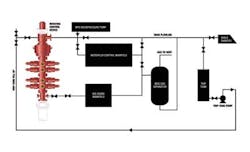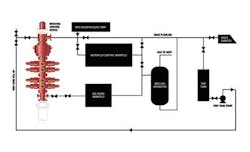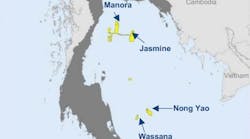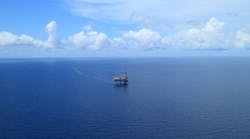Neal Richard
Weatherford
The long-producingUS Gulf of Mexico shelf is being revitalized with new technologies, allowing operators to access untapped reserves in mature or depleted fields that would otherwise be unattainable.
Among the methods opening new opportunities in mature fields ismanaged pressure drilling (MPD). In several cases MPD has succeeded in the Gulf of Mexico (GoM) shelf in mature fields depleted by more than 50 years of production. Hydrocarbon production changes geological properties which cause a reduction in formation pressures and, subsequently, a narrow available drilling window subject to wellbore instability. Using conventional methods, such conditions can render a well un-drillable or lead to dangerous and costly well events such as kicks, losses, and wellbore collapse.
MPD can overcome some of the limits of conventional technology to drill through a tight operating window, manage the changing annular pressure profile, reduce the likelihood of a well control event, and manage wellbore stability to mitigate stuck pipe.
Case history
In one GoM shelf well, an MPD system enabled a major operator to successfully tap previously unattainable assets in a field brought online in the mid-1960s. Although reservoir pressure had declined in the target sand as well as some shallower sands, recent well pressure profile tests indicated that pockets of untapped hydrocarbons within the formation could enable production for many more years.
The well is in South Timbalier, in less than 200 ft (61 m) water depth, southwest of Grand Isle, Louisiana. A variety of problems in drilling an offset well—reduced fracture gradient, differential sticking, and lost returns—showed it would be difficult if not impossible to drill this well conventionally. The target sand's proximity to salt added to the complications and uncertainties.
MPD in a mature field
The operator determined the best approach to produce from these stranded assets would be to drill a side track from the main wellbore, originally drilled in the year 2000. Pre-drill pressure models indicated the margin between wellbore stability gradient and fracture gradient was too tight to drill conventionally, as depletion in the reservoir had reduced the expected fracture gradient. That led the operator and Weatherford to deploy the Microflux MPD control system. The system is designed to enhance safety and reduce environmental risk and cost when drilling through challenging formations, including mature and depleted fields.
The technology facilitates drilling through multiple abnormal pressure profiles using mud weights closer to pore pressure. It helps ensure constant bottomhole pressure (CBHP) is maintained during connections and trips, and allows for dynamic formation integrity tests (FIT) at any depth while drilling. If swabbing is a concern, the MPD control system also can manage surface backpressure to maintain CBHP when tripping out of the hole.
In MPD, a rotating control device (RCD) is required to close the loop. For safety, the closed-to-the-atmosphere system diverts all of the fluid returns away from the wellbore and through the MPD manifold, while simultaneously providing surface back pressure on the well. A closed-loop system allows the flexibility to manipulate annular pressure as the well dictates and enables drilling in environmentally sensitive and hazardous areas by minimizing the potential for fluid spills.
Microflux has an auto-control feature that restores mass balance and provides faster response times to minimize fluid influxes. The ability to quickly adapt to changing well conditions is critical when drilling with narrow margins. Drilling efficiency is enhanced through dynamic mud weight management and more accurate pore and fracture pressure determination. Economically, the technology enables operators to make cost-effective drilling decisions based on actual surface and well data, rather than predictive models, and also differentiates between kicks/losses and less-critical wellbore issues. It reduces non-productive time by mitigating a variety of drilling hazards, improves rate of penetration (ROP) which minimizes tripping and unnecessary well shut-ins.
Following pre-job planning that included a geological analysis of the target and drilling of offset wells, the operator set a whipstock and deployed the MPD control system from a jackup rig to drill an initial 6½-in. side track from the existing 7-in. liner. Drilling abruptly halted due to an unpredicted fault that caused the well to deviate from the planned trajectory.
Displaying 1/2 Page 1,2, Next>
View Article as Single page






